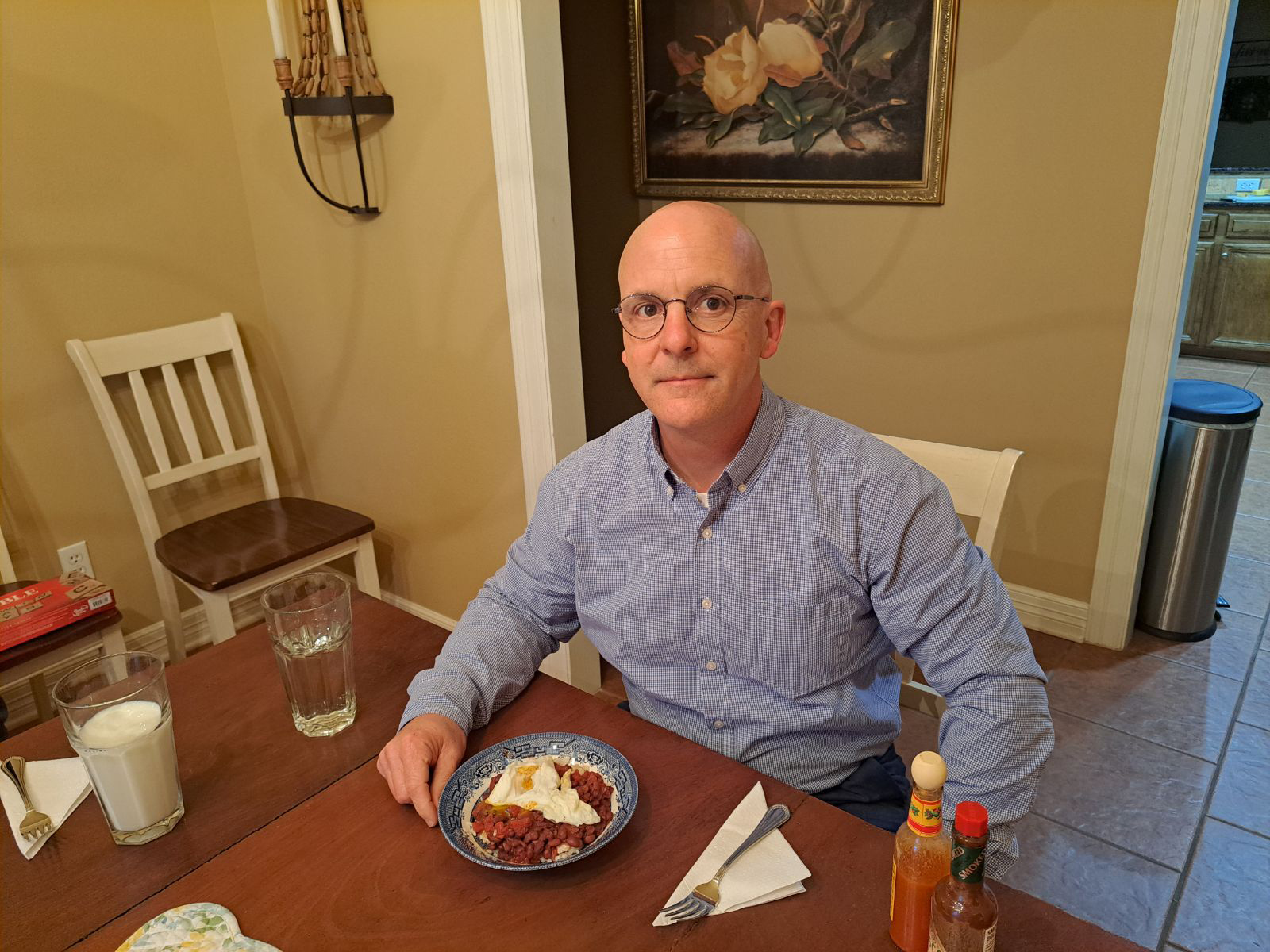Public Affairs Representative for the Air Force Reserve Ted Daigle, who works at Barksdale Air Force Base, relies on Parish Rice, developed by the LSU AgCenter, to help keep his weight down. “I grew up on a rice farm in Acadia Parish where we’d eat rice three meals a day,” Daigle said. “You can’t beat the flavor of Louisiana rice.”
Supporting Louisiana's Rice Farmers
Fighting Hunger and Disease, One Strain of Rice at a Time
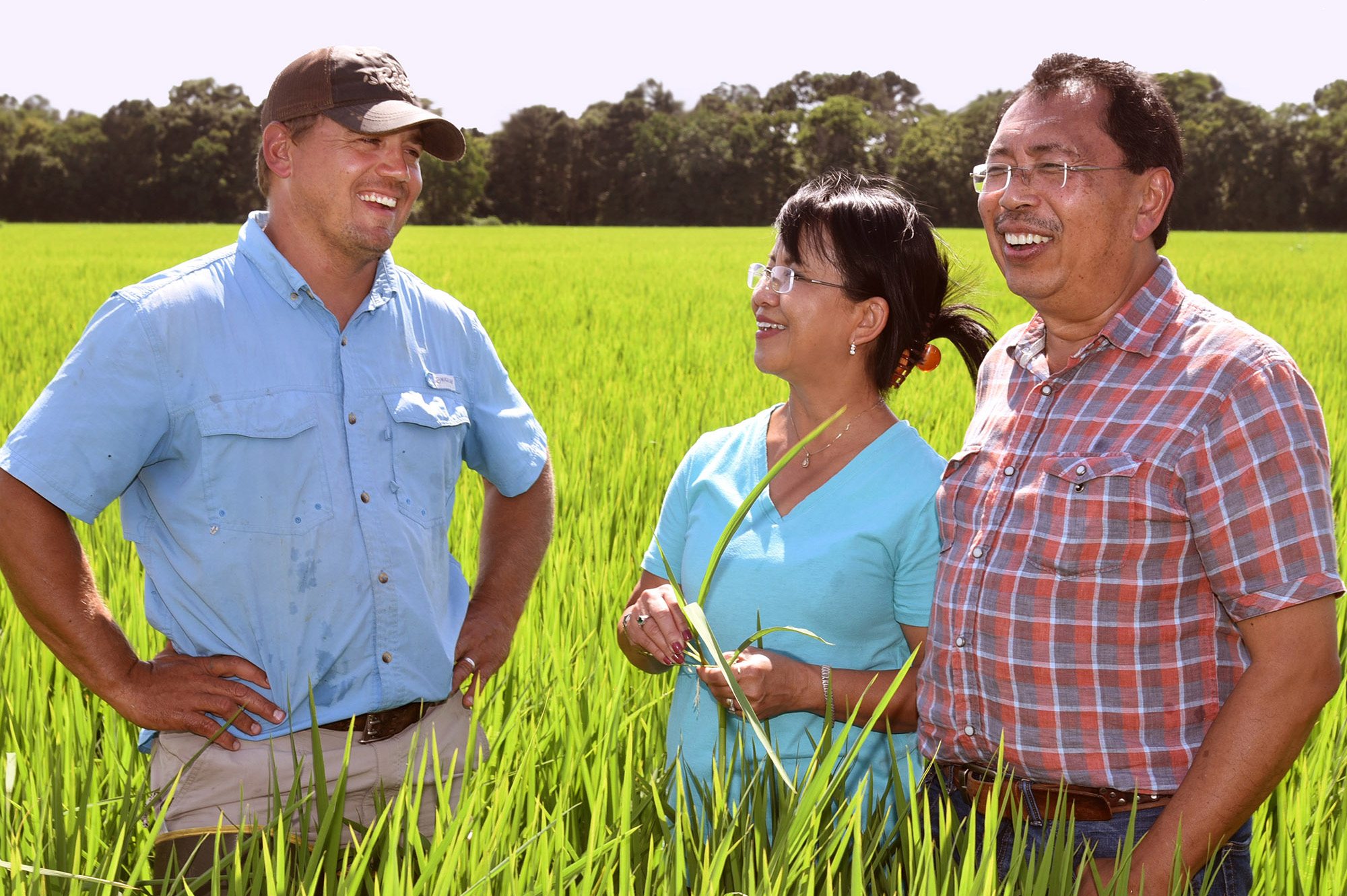
Eunice area farmer Michael Frugé with LSU AgCenter researchers Ida Wenefrida and Herry Utomo, who developed the high-protein, low-glycemic Frontière rice variety Frugé grows and sells as Parish Rice. “Having to watch your blood sugar is the number-one reason people shy away from rice, but we’re rice people, with our gumbo and our étouffée and all of those things,” Frugé said. “As a farmer, growing rice that allows people to eat their favorite meals makes me smile.”
The LSU AgCenter is Louisiana rice farmers’ MVP, or most valued partner, in research and crop variety development. From creating a new market for jasmine rice, to producing varieties of rice that are better for diabetics and more sustainable and resilient to changes in the environment, the LSU AgCenter has been critical to the Louisiana rice industry for more than 100 years. The research also has world-wide impact since one-fifth of the global population’s calories comes from rice.
“The value of LSU’s rice breeding program? Invaluable. You can’t put a price tag on it,” said Bobby Hanks, CEO of Supreme Rice in Crowley, the state’s largest rice mill, which processes over one billion pounds of rice each year. “Between 60 and 70 percent of the rice we mill are LSU varieties.”
That percentage holds true across the state. More than 60 percent of the rice Louisiana farmers plant comes from the LSU AgCenter, with a direct economic impact of $580 million. New varieties are being developed all the time, including at the nation’s first rice research station, in Crowley, Louisiana, an eight-minute drive from Supreme Rice in the heart of Acadiana rice country.
“Without LSU’s breeding program, our farmers would have to depend on programs in other states, and their rice doesn’t grow well here,” Hanks said. “Our industry as a whole would wither and die—it would be hard to survive without LSU.”
While Supreme mostly processes and sells long grain rice, primarily developed by the LSU AgCenter, they also process and sell jasmine rice, wholly developed by the LSU AgCenter.
“Jasmine is a specialty rice that’s gained in popularity, and all the varieties of jasmine rice that are grown in Louisiana and across most of the South come from the program here,” said Adam Famoso, director of LSU AgCenter’s H. Rouse Caffey Rice Research Station in Crowley, known as the Rice Capital of the World. “Before we had jasmine rice, a U.S. market didn’t exist. LSU helped create that market, but we also needed farmers and merchants who were willing to take a chance on it.”
While new varieties are required to adapt to changing environmental conditions, manage new pests and diseases, meet shifting market needs and create new markets, the industry takes risks and invests a lot of money in growing them. That takes trust, “which is why we have to stay focused on what’s tried and true and established,” Famoso said.
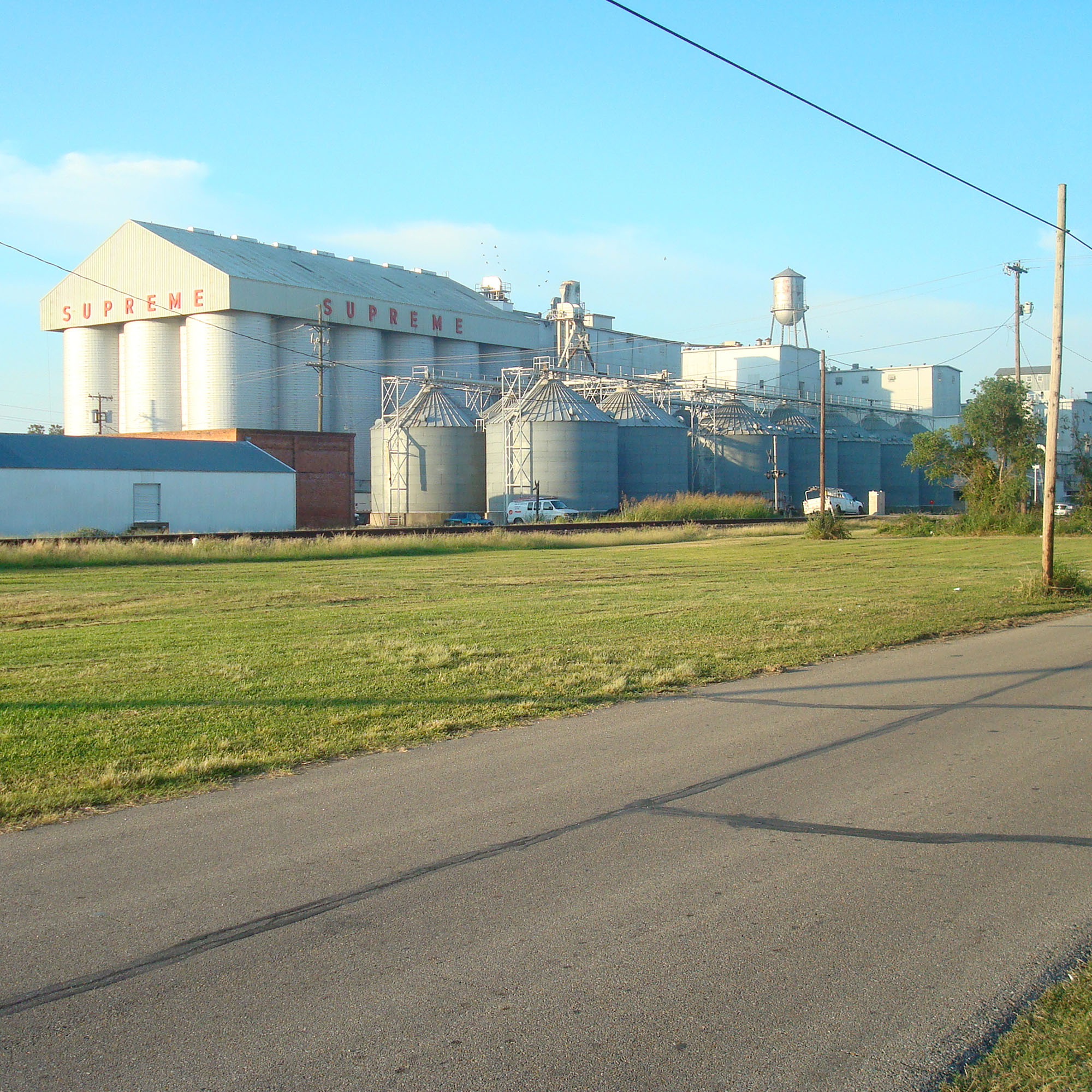
Supreme Rice in Crowley is Louisiana’s largest rice mill. It processes over one billion pounds of rice each year, of which 60-70 percent are LSU varieties.
After releasing its first jasmine rice in 2009, called Jazzman—currently marketed under several brands, including Supreme, Cajun Country and Jazzmen—the AgCenter is getting ready to release a new Jazzman variety, named Fitzgerald after jazz legend Ella Fitzgerald.
Another new AgCenter rice that is one of the more recent to show up in Louisiana grocery stores is Frontière, a high-protein, low-glycemic rice sublicensed to Eunice area farmer Michael Frugé, who grows it and sells it as Parish Rice, together with his father.
“We planted our first Frontière in 2019 and it really took off in South Louisiana in the beginning of 2022,” Frugé said. “We got in a lot of stores in a short period of time, including Rouses, Winn-Dixie, a couple of Albertsons and then Brookshire stores up in North Louisiana.”
Frugé also grows jasmine rice, which gets milled and sold by Falcon Rice Mill under the Cajun Country brand.
“We grow upwards of five different varieties of rice any given year, all of which come from LSU’s rice research station in Crowley—every single one,” Frugé said. “We have Frontière on maybe a third of our 1,500 acres of rice. We also do 1,200 acres of soybeans and 500 acres of crawfish.”
“We consume exponentially more rice in southern Louisiana than everywhere else,” Frugé added. “I knew that going in, but now I really know it. We’re rice people, with our gumbo and our étouffée and all of those things. Some people have had to go away from it, because of the effects white rice can have on you, but as a farmer, growing rice that allows them to eat their favorite meals again makes me smile. It’s a joy, even if it’s been a lot of work. We do work our butts off.”
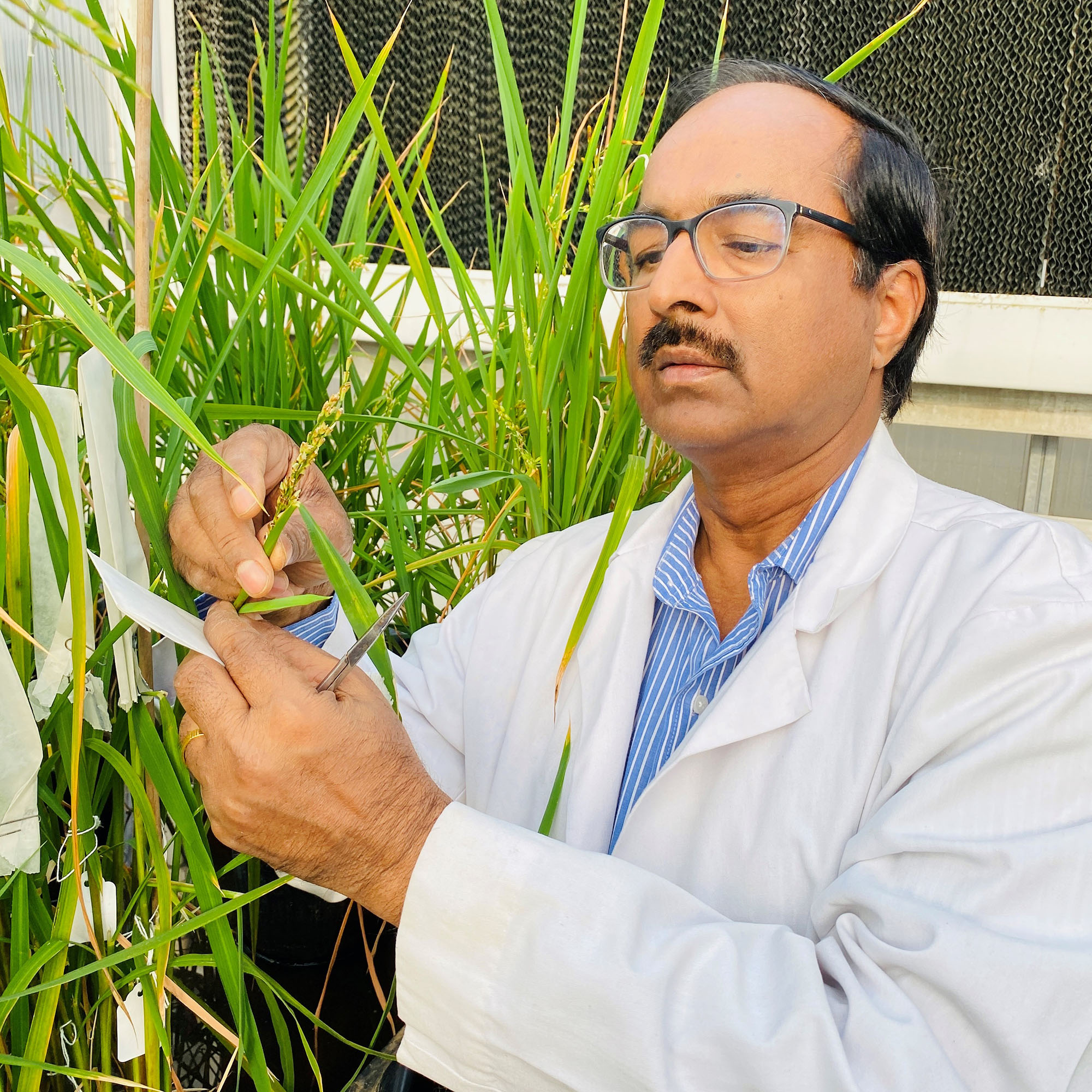
Last year, an LSU-led team won a $10 million grant from the U.S. Department of Agriculture to develop climate-resilient rice that requires less land, less water and less energy to grow. It’s the largest grant for rice research the AgCenter has ever received. With 15 researchers at LSU and nine more across five states, the project relies on the LSU AgCenter’s longstanding expertise in research and extension service to support farmers and the Louisiana rice industry. LSU AgCenter Professor Prasanta Subudhi leads the effort.
Frontière was originally developed by the LSU AgCenter as a high-protein rice to help feed the world, since people in low-income countries often can’t afford to eat meat on a regular basis. But the rice turned out to also have another key quality—its low glycemic index, which means it doesn’t cause a sharp rise in your blood sugar after you eat it. When Frugé first heard of this, he didn’t fully understand what it meant.
“Neither one of us had ever heard of a glycemic index value before we looked into it,” Frugé recalled. “Then, ‘This is the most important thing I’ve ever heard!’ Having to watch your blood sugar is the number-one reason people shy away from rice.”
NuNu’s Fresh Market in Youngsville was among the first to stock Parish Rice.
“Our customers look for Louisiana rice, and people don’t change much. They like what they like,” said Blaine Broussard, owner of NuNu’s. “But we’re starting to see people being more health-conscious, and we have a lot of customers with special needs diets. So, when we first started selling Parish Rice, we couldn’t keep it in stock. People went crazy.”
Parish Rice customer Cheri Johnson lives in Sulphur, in southwestern Louisiana. She was diagnosed with diabetes in June 2022, when she weighed 400 pounds.
“I bought my first bag of Parish Rice in November of that year, and we haven’t eaten anything else since then,” said Johnson, who now weighs closer to 200 pounds. “There are so many recipes that involve rice. It’s comfort food, but diabetes killed my grandmother, and I have children and stepchildren and want to be here for all of them.”
In northwestern Louisiana, outside Bossier City, Public Affairs Representative for the Air Force Reserve Ted Daigle, who works at Barksdale Air Force Base, is another Parish Rice customer who first wanted to try the high-protein, low-glycemic rice to help keep his weight down.
“I grew up on a rice farm in Acadia Parish where we’d eat rice three meals a day,” Daigle said. “My dad was a rice farmer and my wife’s grandfather was a big rice farmer, so we love rice. It’s just nice to have good Acadia Parish rice in your pantry, and you can’t beat the flavor of Louisiana rice.”
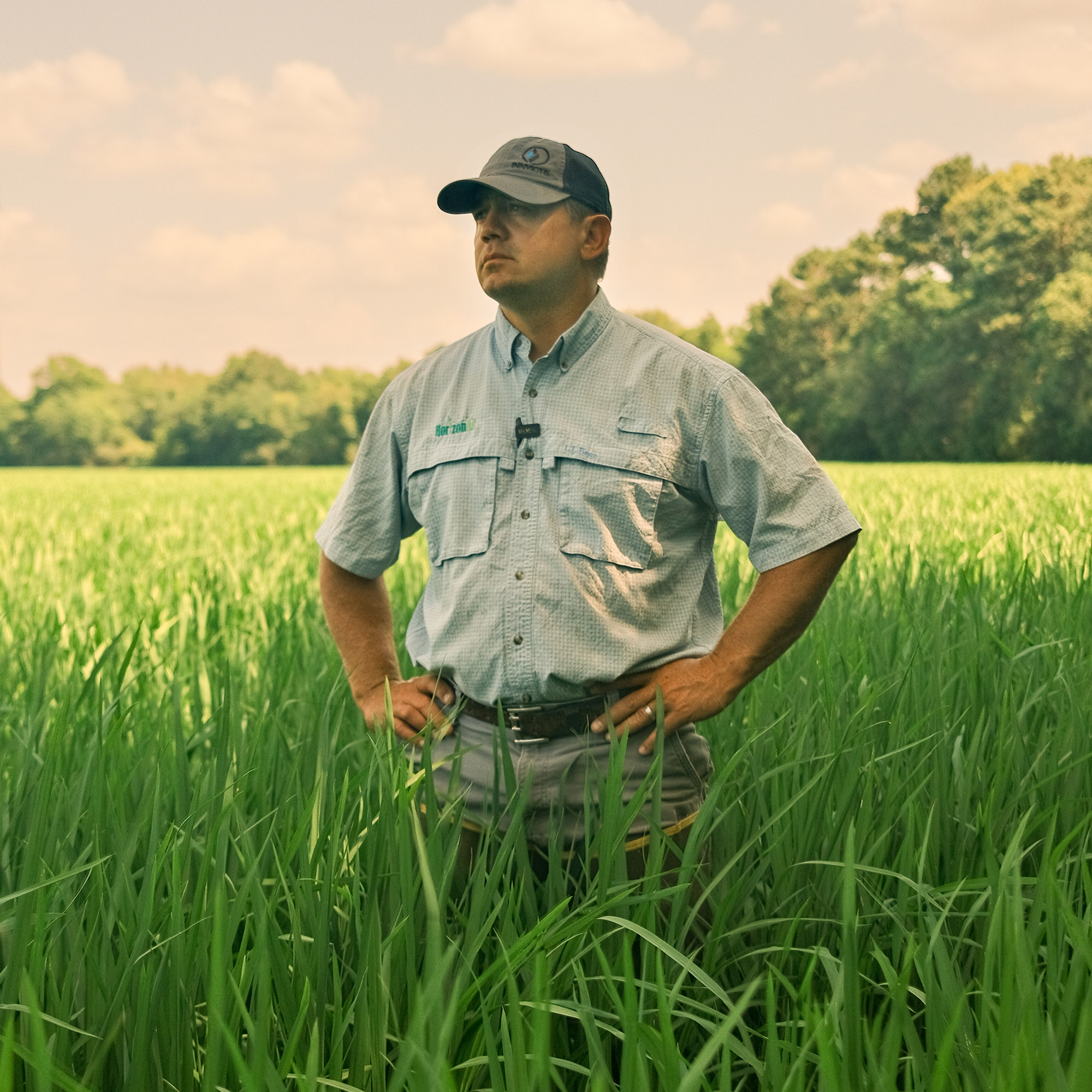
Eunice area farmer Michael Frugé is a double LSU graduate—he first attended LSU Eunice for two years and then LSU’s flagship in Baton Rouge, earning his bachelor’s degree in agronomy in 2005. Since every tenth adult American has diabetes and every third has prediabetes, Frugé saw an opportunity to invest in LSU AgCenter’s Frontière rice variety, which has almost double the protein and half the glycemic index value. “Every variety of rice we grow comes from LSU’s rice research station in Crowley—every single one,” Frugé said.
The LSU AgCenter researchers behind Frontière are Herry Utomo and his late wife, Ida Wenefrida.
“Without my wife, the idea of creating this rice would probably be only a dream,” Utomo said. “Her mind was so focused, and for seven-plus years, we were cycling between the lab, the greenhouse and the field to do genetic selections for six successive generations. We tested a thousand samples, and she was so meticulous to make sure the protein content stayed consistently high.”
Utomo now carries on his wife’s legacy by developing new high-protein, low-glycemic rice strains with even higher yields. He’s also talking with his “medical friend,” LSU Boyd Professor Eric Ravussin at Pennington Biomedical Research Center, which is a world leader in research to prevent and treat metabolic disease. Utomo is already engaged in an international biomedical study that is sending 19,000 pounds of Frontière rice to Peru. There, prediabetic families are given either Parish Rice or a similar-looking “placebo” rice for a period of three months. The researchers are looking for increased insulin, better control of blood glucose and—eventually— decreased incidence of diabetes in those on a high-protein, low-glycemic rice diet. Next, Ravussin is planning to lead a crossover study at Pennington Biomedical in Baton Rouge with 20 rice eaters. A crossover study is a clinical trial where all participants get all treatments—or diets—but not at the same time.
“Combining biomedical research at Pennington with our biotechnology and crop variety development here at the AgCenter opens the door for doctors to then recommend some of the foods we create almost as medicine,” Utomo said.
“I’m happy to collaborate more closely with the AgCenter because, after all, research on nutrition, obesity and diabetes is our bread and butter,” Ravussin said.
Or rice, perhaps.
Read More
LSU AgCenter awarded $10M USDA grant for Louisiana rice industry sustainability



